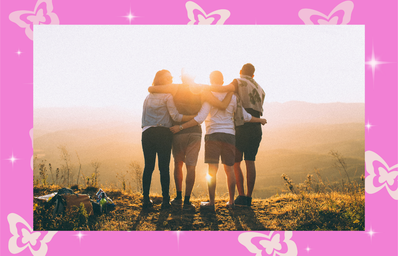Do you know what a photograph means? Or what value does it hold for the subject and the person clicking? Do you imagine it to be a safe keep for fading memories or a means to empower yourself and the world with stories you were an eyewitness to? Or both?
All credits to a photograph as a return ticket to a moment otherwise gone, we get to look back on it and remember what was special during that time frame. Each time the shutter clicks, the subject’s expressions are captured, and along with it, the photographer’s too. The latter has ideas and a voice, and photography is a way to bring those abstracts to life.
When you come to think of photography, the first image that pops into your mind would be of a DSLR. Although, it is much more than that. Every time you see a sunset or raindrops on leaves and feel the urge to capture it, that’s photography. Whenever you open your photo album due to childhood nostalgia, that’s photography. It is the desire to hold onto all the happiness that life pushes your way.
A Quintessential Photographer’s Persona
The problem with experiences is that they are personal to the point where one can never fully grasp the extent to which a happenstance affects a person. While articles and statistics are informative, you don’t get to feel what is happening around you until you see it firsthand. And for that, it takes a special eye to see something that most people consider ordinary.
A photographer provides the perspective, the lens through which the world is captured, with virtues ranging from marking the events of everyday life into stills to recording catastrophes and wonders begging to be remembered.
My photography journey started with my will to express unique perspectives that remain hidden, the unreflected moments and emotions that I perceived in the hindsight. What I’d been taught was that your pictures are sounds, and when you convert them, they become a language. My photographs became my voice, and with it, came the stories I learned to make and minute details I started to notice.
One of the greatest pursuits of this practice is to find really small, seemingly meaningless things and turn them into something more valuable and tangible. Following the light – where it’s coming from and where it’s going, along with the aforementioned envisions the perfect picture and makes a photographer. Understanding the fact that something small for someone is something huge for someone else is the first tick on a photographer’s checklist. It is when this box is checked, the picture starts to form in the individual’s head.
Everything’s an aesthetic, from the roughness of train tracks to the empty, minimalist sky with a single airplane. Whatever you see forms a frame in your head, a print you’d want to keep in your bedroom and constantly gaze at it. A photographer’s persona becomes one of romanticizing the smallest of things to envision a greater perhaps in mind.
The Days I left my Camera at Home
“You don’t need to have words for anything, I can just represent myself visually.”
– Lauren Elsberry, Photographer
One can now say that words aren’t enough to depict realities, for example, the wail of a baby, the sight of women protesting for their rights, or the eeriness of an empty metro, and a photograph carries these smudged details and faded messages well after our memory recedes. But, what about the situation when the person can’t recollect that instance? Would a photograph help then?
The days I left my camera at home were the ones I could get the essence out of what those moments were all about. It’s about striking a balance between actively living every part of it, and not letting the routine of waiting for your shutter to open and focus cut your remembrance of the moment.
Maybe you could get a breath of fresh air before checking the list of aesthetics you’ve plotted in your mind and further get the feel of coming home to no unedited photographs stacked up. It may feel empty at first, ultimately your camera is practically your best friend with a good memory who has your back, but uniqueness doesn’t come with routine and interpretation is something that shouldn’t be repetitive and stagnant.
Everything’s up to interpretation, and through this practice, a picture shares exactly what a person wants it to. People decide their own special meaning and that is what’s so special in that single print. Photography is a broad thing, something everyone can enjoy, it’d be a waste to see it get stained with waves of vanity and shallowness.


